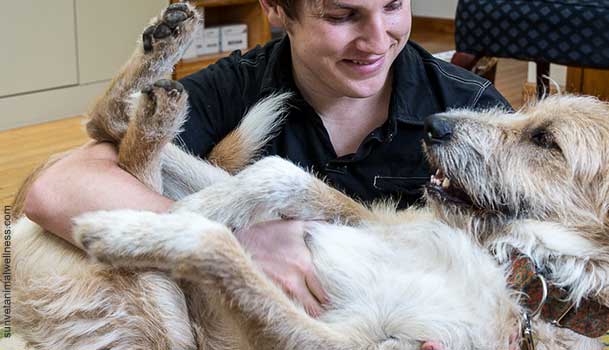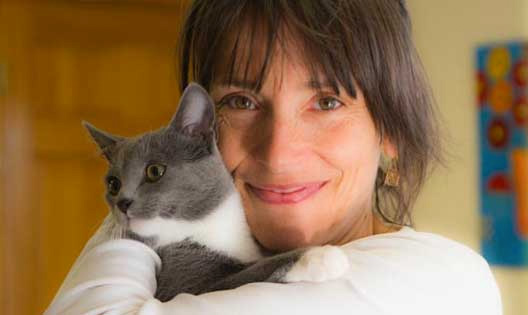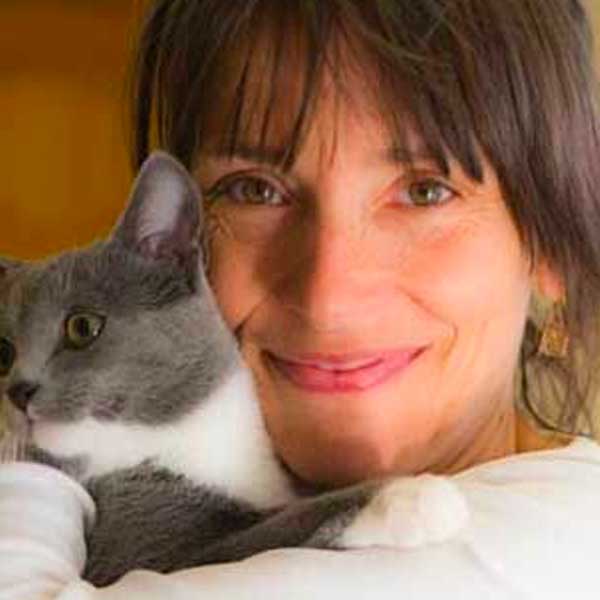Dr. Laurel Davis, Asheville’s holistic veterinarian, offers Stories from a Holistic Veterinarian, the blog of a holistic vet and “animal interpreter.” With a clinic in downtown Asheville, NC. Dr. Laurel also offers animal health, lifestyle and vaccination advice for cats, dogs and their human friends across the country.
Have a question for Dr. Laurel? Send it in.
Want comprehensive or detailed dog or cat advice? Schedule an Ask Dr. Laurel™ phone or Skype consultation.
How to trim your tiger and pare your pup! Tips from Asheville’s holistic veterinarian
Did you know that October 12th was National Pet Obesity Awareness Day? In honor of becoming aware of our animals’ weight, Dr. Laurel Davis, Asheville holistic veterinarian, has devoted two blog posts to address this crucial subject. We hope you benefit from our information on animal obesity and the tools, knowledge, and advice on how to manage your fur baby’s weight we offer in these posts. Also, please consider visiting the American Veterinary Medical Association’s (AVMA) calendar to stay updated on more information pertaining to pet awareness events.
Just like human obesity, the topic of pet obesity is immensely challenging! There are many variables involved, especially due to the plethora of beautifully unique breeds with different body types gallivanting around the world, blessing us with their inevitable cuteness. For these reasons, it is impossible to find a one-size-fits-all approach within this two-part blog series. Although we have provided an abundance of practical information, please understand that this is not intended or recommended to replace regular vet visits. If you suspect there is a legitimate issue with the weight of your furry loved one, please consider a consultation with Dr. Laurel Davis.
Before diving into the nutrition and exercise component of this two-part series, we urge you to visit last week’s post: “Does this fur coat make me look fat? How to tell if your dog or cat is overweight.” “According to the Association for Pet Obesity Prevention, an estimated 54 percent of cats and dogs in the United States are overweight or obese.” Our first segment explains the long-term health ramifications of pet obesity and provides tips to be able to detect if you fur babe is indeed overweight. Don’t fret because, today, we explore solutions!
Get Rid of the Pudge with Dr. Laurel’s Nutrition and Exercise Tips!
- Cut their food intake by 15–25%. This can be the toughest ‘tough love’ move to make. Yes, they will be hungry! Yes, they will express their craving to you with whines, meows, wet noses and paw taps. However, many dogs and cats display this behavior even when they are not even in need of food! See some helpful hints below.
- Increase their exercise level gradually day to day. Hang in there, and make it fun for both of you.
- Exercise for dogs: Fetch, walks, hikes, visit the dog park or somewhere they can truly run like the wind. Organize exercise for the body and mind for the both of you such as agility or scent tracking, swimming, underwater treadmill, hide and seek. Make your goal to keep ‘em moving for thirty minutes twice a day.
- Exercise for cats: Play with them more! Many overweight cats will be reluctant to move much, so stick with it and be persistent! If you have a group of cats and your round cat is the shy cat, by all means, please, separate them out and have a one-on-one play time. If you see them lying around too much, get them up and engage them with hide and seek, throw the paper wad, laser light, feather on the fishing pole or thick string toy moving along the floor. See next tip!
- Cats and dogs are most active in the morning and in the late afternoon, i.e. as the sun is rising and when it sets. A brilliant time to frolic with your four-legged buddy is the morning and evening, just before you feed them. In the wild, they would be hunting at those times and, if they were successful, would then devour their prey!
- Having your feline or canine exercise may also mean you don’t have to reduce his food as significantly, especially as his endurance builds up.
- Dogs are a bit more like humans in that they are able to handle more extreme decreases in caloric intake.
- Cats should be guided to lose weight very slowly. They should be eating at least half of what they normally had been eating at all times. Rapid weight loss can lead to fatty liver syndrome, also known as hepatic lipidosis, which can cause liver failure.
- Reduce the size and frequency of treats.
- Replace any treats containing carbohydrates such as grains, flour, corn, milk, tapioca, sugar, honey with a vegetable or meat treat. Let’s keep them “paleo”! See our next blog concerning what treats to focus on.
As we all know, weight loss is tough love, not only for ourselves but for our puppy and kitty pals as well. The payoff comes when we begin to experience that extra energy and alertness, the ability to move more gracefully and more often without the huffing and puffing. We then experience fewer visits to the doctor and, in the case of our ever lovin’ four-leggeds, perhaps an increase in lifespan of up to two years or more!
Reduce those calories and get the buns moving!
Shine on!
Dr Laurel
Dr. Laurel Davis is Asheville’s holistic veterinarian offering phone and Skype consultations for animal lovers everywhere. Call 828-254-2221 or order an Ask Dr. Laurel™ phone or Skype session or bring your dog or cat to her downtown Asheville, NC clinic. Read more patient stories.
Get to know Dr. Laurel by reading her blog.
Do you have a story about Dr. Laurel’s dog advice or how she helped your dog or cat? Please post your comment on our Facebook page or write a Google Review.



